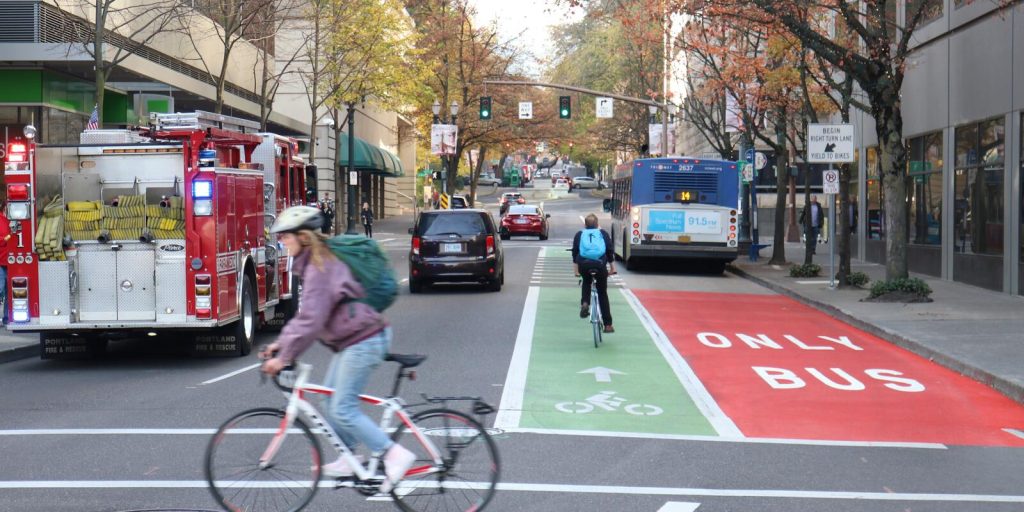Transportation and Roads – A history

Roads in the USA and throughout the world grew and developed organically. From the early roadways in Rome and Europe to the 16th, 17th, 18th, 19th, and 20th centuries, roads developed along side innovations in transportation. Cobblestone streets that once worked for horse drawn carriages became woefully inadequate once automobile use began to grow. Roads were improved, and as auto speeds increased, more efficient surface street and highway planning to accommodate a growing population and growing number of cars in the US went along with it. While certainly not always perfect, traffic planning always understood the simple fact that cars were the preferred mode of travel. Routes, lanes and flows were designed to accommodate them.
Enter Climate Change. Global Warming. The Climate Crisis.
With the call by certain groups to address this issue and bolstered by political movements, climate change activists now seek one fundamental goal with cars: The end of the use of automobiles in favor of public transportation. This attack on cars has come on many fronts: tax increases when purchasing cars, taxes on gasoline, increases on smog certification costs on older cars, to name but a few. The newest “solution” to the climate issue is to punish car drivers and and discourage car use by implementing traffic lanes that favor bus, bicycle and pedestrian traffic.
And how, exactly, do they punish car owners? As you can see in the picture above, what was once a two way street that accommodated traffic in two directions as well as parking on both sides, now creates a mess for drivers. A car making a right turn has to contend with a bicyclist riding up behind him, emboldened into thinking the green strip he is in is a magical barrier that will protect him from the 2000 pound car. The bus, which weighs about 23,000 pounds, is given the right of way at traffic lights, and the driver has to contend with a possible crash with a bus.
Parking is also removed in these kind of street configurations, and the lack of parking discourages patronage of businesses along those streets. Advocates for this kind of street planning have a misguided belief that by limiting parking, people will be encouraged to take public transportation.
They won’t. They will simply stop coming into those areas because of the difficulty of finding parking.
City planners, real estate developers and Rideshare companies all openly admit that these policies will discourage automobile use, which for their own selfish reasons feel are beneficial to themselves. There’s a few problems with these policies. First, it’s automobile owners and drivers that pay the taxes that not only pay to maintain those streets but also pay to create and maintain public transit. So Drivers should get the priority of use of both street lanes and parking. Second, no one aspires to be a bicycle or public transit rider. People do it, mostly because they have to, but given the chance, everyone aspires to eventually own a car and gets a one at some point in their life. This is born out by statistics, reported by Forbes from the US Department of Transportation Federal Highway Administration. 278,870,463 personal and commercial vehicles were registered to drivers in the U.S. in 2022. And between 2018 and 2022 personal and commercial vehicle registrations increased by 3.5%. The total population in 2022 in the US was 333,287,557, with approximately 227 million adults. As Forbes reports, 91.7% of households had at least one vehicle in 2022. Only 8.3% of households did not have a vehicle.
Why then, are cities continuing to attempt to accommodate that small 8.3% portion of the US population that do not own a car?
It is a false belief that they are doing good for the environment, helping others to see their enlightened and more “compassionate” beliefs that will help all people. In fact it is doing the opposite. It is not helping either bus riders, bicyclists, or automobile owners, and it is not helping the environment.
This push to favor public transit and bicycles in the planning of traffic patterns and parking must end.
And that end, starts here.
Information and links used for this article
https://www.statista.com/statistics/241488/population-of-the-us-by-sex-and-age/
https://www.theguardian.com/cities/2017/jun/13/oslo-ban-cars-backlash-parking
https://www.lyft.com/blog/posts/the-end-of-parking-minimums
https://www.census.gov/newsroom/press-releases/2022/2022-population-estimates.html
https://parkeagle.com/2020/02/02/remove-parking-inner-cities/
https://www.forbes.com/advisor/car-insurance/car-ownership-statistics/
https://www.sunwooddevelopment.com/building-blog-ct/the-history-of-cobblestones-and-their-use-in-paving-for-your-connecticut-home
https://www.cdtfa.ca.gov/taxes-and-fees/fuel-tax-and-fee-guides/use-fuel-tax/
https://lao.ca.gov/Transportation/FAQs
